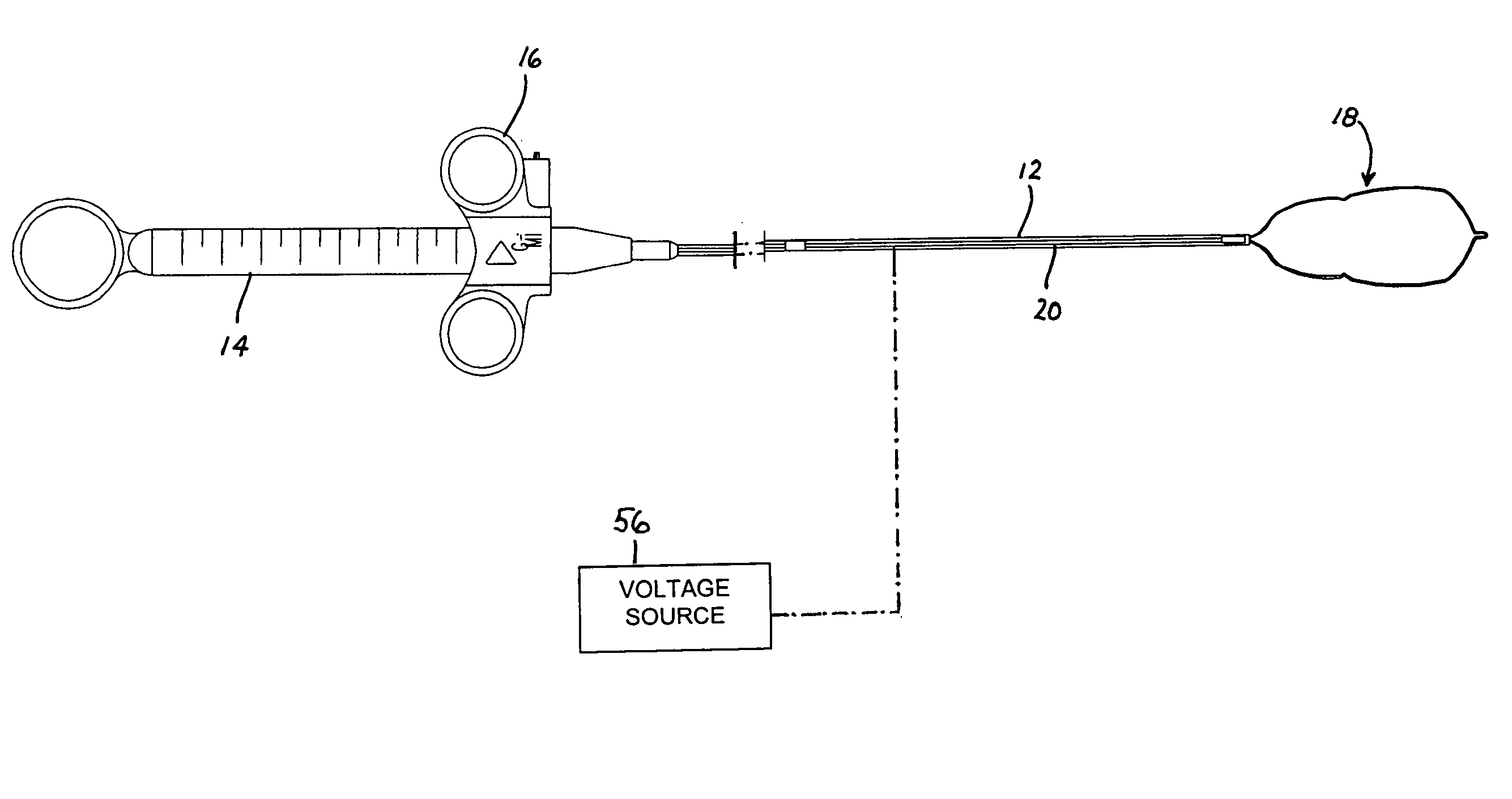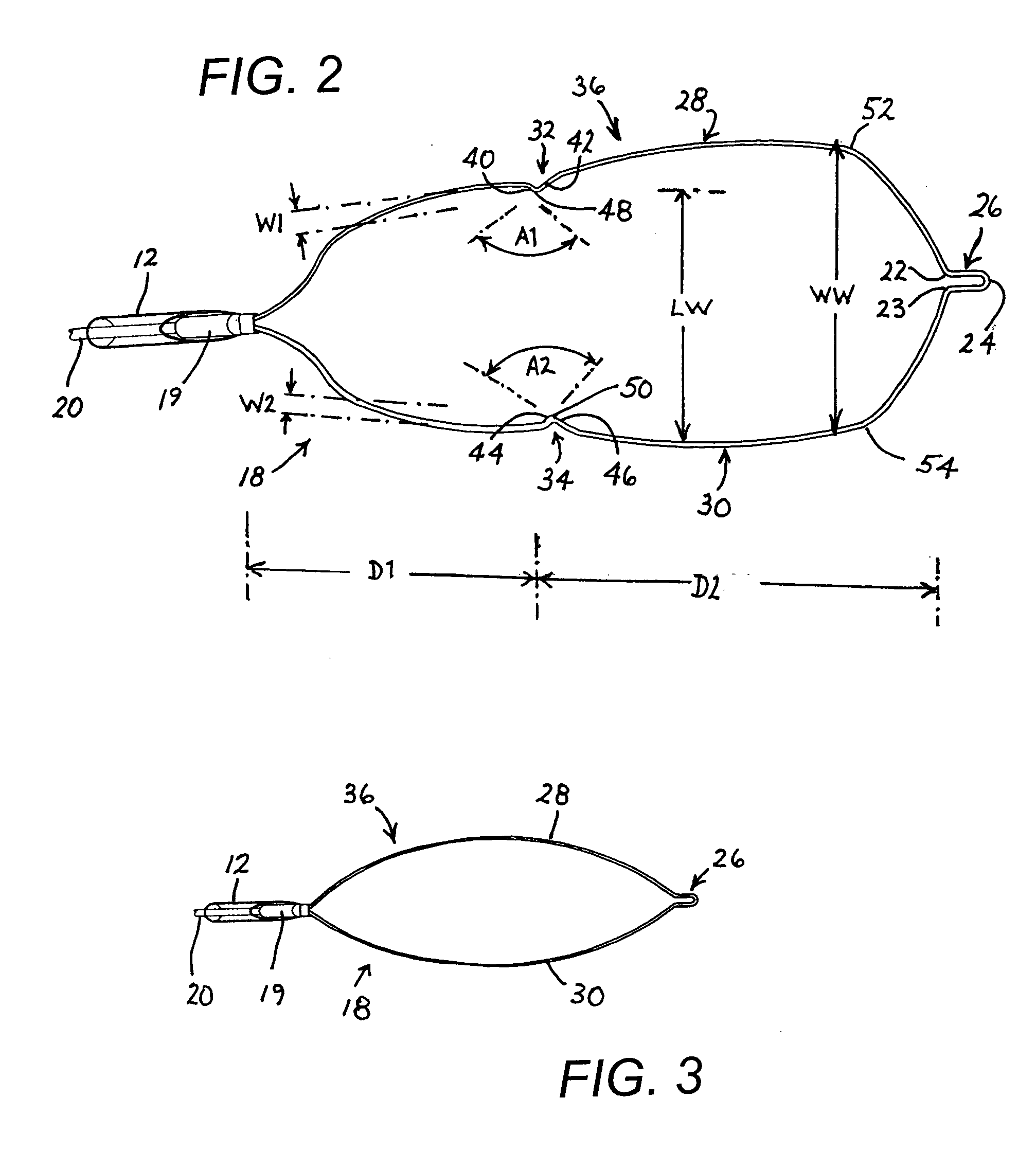Medical instrument with indented loop and associated method
a medical instrument and indented loop technology, applied in the field of medical instruments, can solve the problems of obstructing the proper positioning of the snare within the patient, difficult to encircle the polyp with the cauterization loop, and different sizes of the polyp, and achieve the effect of simple and inexpensive manufacturing, effective use and simple structur
- Summary
- Abstract
- Description
- Claims
- Application Information
AI Technical Summary
Benefits of technology
Problems solved by technology
Method used
Image
Examples
Embodiment Construction
[0031] As depicted in FIG. 1, an endoscopic cauterization snare instrument comprises an elongate tubular member 12, a handle 14 with a slidable actuator 16, and a resilient loop 18 made of a wire or electrically resistant material as is well known in the art. Tubular member 12 is a catheter attached at its proximal end to handle 14. Loop 18 is attached to a distal end of an elongate rod or wire member 20 extending longitudinally through tubular member 12 to actuator 16. A metal tip element in the form of a sleeve 19 (FIG. 2) is inserted in the distal end of tubular member 12 and is rigidly fastened thereto. Sleeve 19 is a serves as a guide for loop 18 during ejection and retraction procedures. To that end, sleeve 19 is provided at a free end with a segment 21 that is rectangular in cross-section. In FIG. 1, actuator 16 is shown disposed in a most distal position relative to handle or grip 14. In that position of the actuator, loop 18 is in a fully extended and fully opened configura...
PUM
 Login to View More
Login to View More Abstract
Description
Claims
Application Information
 Login to View More
Login to View More - R&D
- Intellectual Property
- Life Sciences
- Materials
- Tech Scout
- Unparalleled Data Quality
- Higher Quality Content
- 60% Fewer Hallucinations
Browse by: Latest US Patents, China's latest patents, Technical Efficacy Thesaurus, Application Domain, Technology Topic, Popular Technical Reports.
© 2025 PatSnap. All rights reserved.Legal|Privacy policy|Modern Slavery Act Transparency Statement|Sitemap|About US| Contact US: help@patsnap.com



